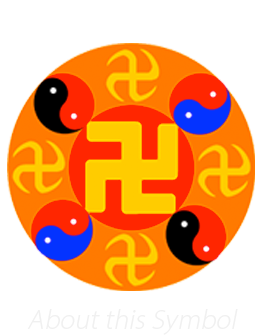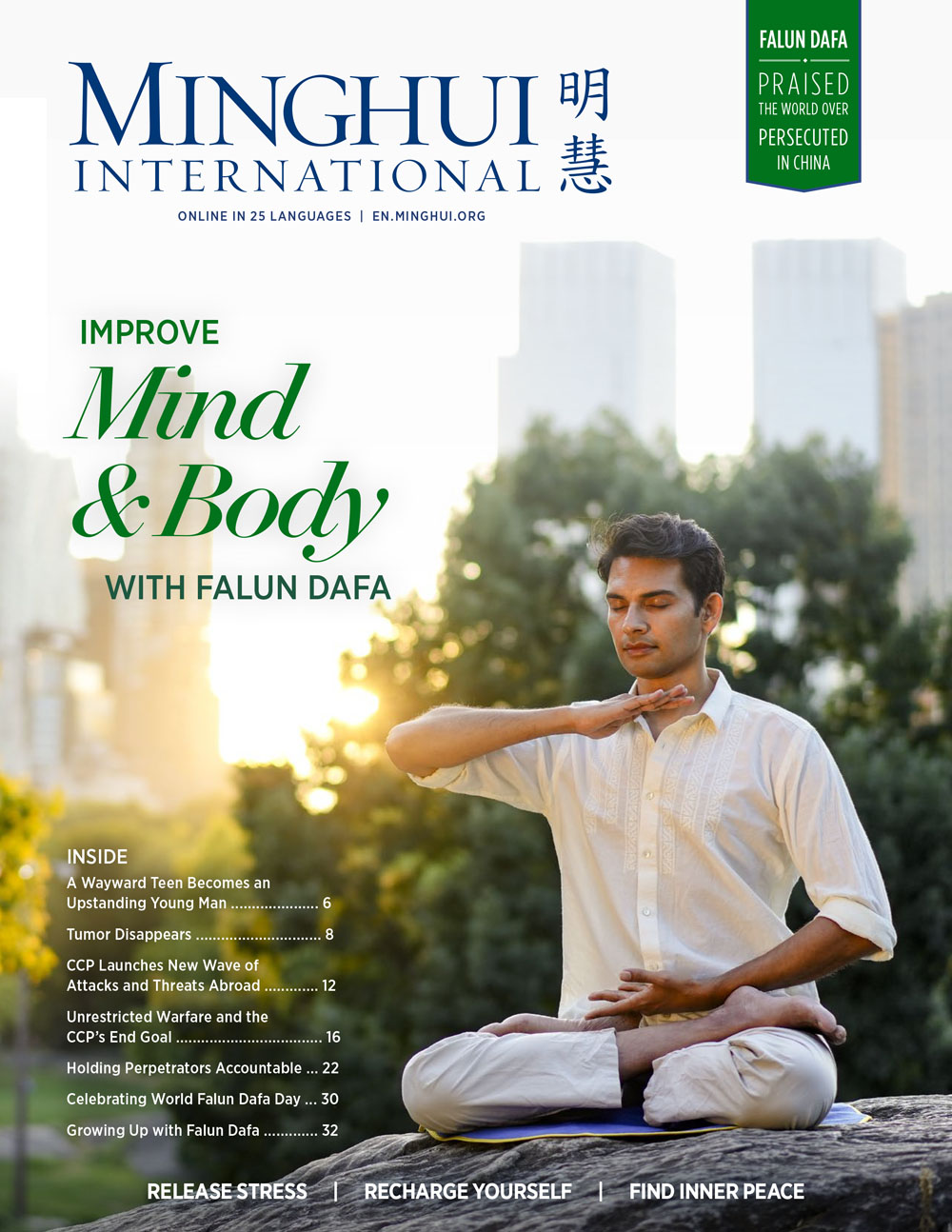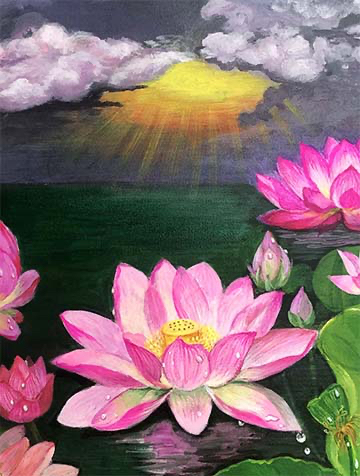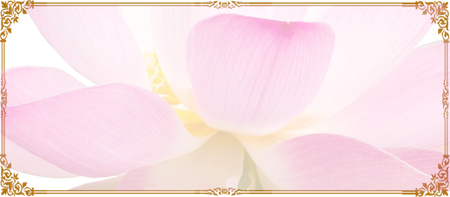(Minghui.org) Greetings, Master! Greetings, fellow practitioners!
I came across Falun Dafa in 2003. I had lived in New York for 15 years at the time, and had just separated from my husband.
I was a premature baby and was only as big as two oranges when I was born. My mother didn’t have any breast milk. The midwife said to her, “You already have two children. You could give this one up.” Because I cried with a loud voice, my mother believed that I would not die prematurely. She put me in a bamboo basket with a hot water bottle and fed me rice soup. I might have had a congenital deficiency, because I was weak with many illnesses. I often caught colds, coughed constantly, and was diagnosed with bronchial asthma in my twenties. I paid particular attention to my health and yearned to have a healthy, strong body.
When I was still in the U.S., a Japanese friend told me that Falun Dafa had extremely strong energy and was much better than other qigong practices. Now that I practice Falun Dafa, I hardly suffer from any illnesses, and maintain good health thanks to Falun Dafa. Here I’d like to express my deep gratitude to Master.
Coming Across Falun Dafa in the U.S.
My friend initially only taught me the exercises movements. She later said that I needed to read the Falun Dafa books, and she lent me a copy of Zhuan Falun. I was deeply attracted to the book as I read it repeatedly. I sometimes felt the words in the book becoming three-dimensional. My body often felt so light, as if it was floating in the air. One day when I was practicing the exercises at home, I felt clearly that a Falun had entered my belly, and on another occasion I felt the Falun spinning within my body. I believe that Falun Dafa is not an ordinary qigong.
We used to study the Fa and practice the exercises at a Western practitioner’s home in Manhattan, but the practice site later moved to Manhattan’s Chinatown. I looked forward to having meals in the restaurants in Chinatown after we finished practicing the exercises. I vividly remember the scenes when we were doing the sitting meditation in the snow and bitter cold winds, and I miss those times. When I had time, I helped proofread Chinese translations for The Epoch Times. I was also involved in promoting Shen Yun and distributing flyers.
Back then my mentality was not completely that of a practitioner. I felt exhausted trying to make a living. Considering my age, and because I was concerned about my 93-year-old father who lived alone in Japan, I decided to return to Japan.
I returned to my hometown in January 2017, after 35 years in the U.S. I applied for a two-year tourist visa because I was not sure if I could adapt to Japanese society. After all, Japan is a closed society and dislikes outsiders.
Cultivation in Japan
I had a lot of conflicts with Japanese people during the first two years, due to the language barrier, my different notions, and cultural differences. But thanks to Master’s compassionate protection, at age 64, I managed to pass the Eiken Grade 2 Test and get the Kaigo Basic Certification (a certification required for providing care services for elderly or disabled people). I returned to my hometown to look after my father. I accompanied him for the final part of his journey for a year and a half. I was very thankful to Master for this. I believe that Master arranged this for me.
I am currently studying the Fa online with other practitioners. My Japanese has improved a lot from these study sessions. It has also helped me with my work proofreading for the media. I am thankful to the practitioners who study the Fa with me. I didn’t feel that I fit into Japanese society when I arrived in Japan, but the Japanese practitioners shared with me and listened to me patiently. They are the warm force that supports me.
Although I am elderly and my Japanese language skills are not great, I still got a job as an English lecturer and a care worker. I work as a proofreader for our media. I understand that I made such achievements due to Master’s care and protection.
Improving Xinxing While Working in the Media and Promoting Shen Yun
I had a temporary job at The Epoch Times while I was in New York. The coordinator in Japan asked me to join the media in 2020. I am currently a translator and proofreader for the media. While I am reading the articles, I often find my deeply rooted attachments, such as fear, selfishness, jealousy, seeking comfort, and competitiveness, as well as my xinxing problems.
I had a lot of complaints against other practitioners initially. I complained to the coordinator about how much hard work proofreading was. I couldn’t understand why, as a newcomer who just came to Japan, I was given the task of proofreading complicated articles about current affairs, instead of the Japanese practitioners who had lived in Japan and done the proofreading job for three years. My mentality was like what Master described as “an issue of pursuit.” I had the attachments of jealousy, competitiveness, and seeking comfort.
Every incident is an opportunity for cultivation, and hardships in cultivation are normal. Yet I didn’t understand this. I found that my Japanese language competence and technical skills were not up to par. I needed to work hard and cultivate diligently. Luckily, practitioners helped me. I am thankful for the opportunity to work in the media.
While participating in Shen Yun promotion in recent years, I seized the opportunity to find my xinxing problems. Other practitioners pointed out that I had many characteristics of American people, though I thought I was completely Japanese. I was selfish, and always thought I was right. When I communicated with other people, I had these thoughts, and had conflicts with other practitioners. I often wondered if I lacked compassion. Going forward, I will cultivate diligently and become more considerate.
Yukata Parade: An Innovative Experiment by Japanese Practitioners
I was very impressed by the Falun Dafa parade to celebrate Master’s birthday that was held in Asakusa on May 11 this year. This was the first time that mostly Japanese practitioners participated in this parade. The Chinese practitioners initiated the parade, but Japanese practitioners, as a minority, took part in the parade courageously with the Chinese practitioners and cooperated well. This was a precious experience for me.
We had never tried this kind of parade before. During the long holiday in May, I attended the Hiroshima Flower Festival parade wearing a yukata (a type of kimono worn in Japan during the summer). This was my prior experience.
I admired the Japanese practitioners who worked together to save sentient beings. I hoped to let Japanese people know that there were many Japanese practitioners in the Falun Dafa parade. The Chinese practitioners suggested that we wear yukatas in the parade in Asakusa, and I agreed completely. This was only five days before the parade, and I was worried a bit and started to contact Japanese practitioners, most of whom didn’t have time to help me. I bought a secondhand yukata and a pair of straw sandals. The biggest problem was finding someone to help us to put on the yukatas.
I had just attended two lessons on course on how to wear a kimono. No other Japanese practitioners knew how to put on a kimono. They didn’t have their own yukatas or straw sandals. As a last resort, I asked for help from practitioners in Hiroshima. Luckily, one practitioner was coming to attend the Asakusa parade, so I felt a bit relieved. She was able to provide us with the yukatas and sandals we needed. The next unknown was how many Japanese practitioners would come to help on parade day?
It was very hot on the day of the parade. The Chinese practitioners set up a tent, which was as hot as a steamer, even in the morning. A practitioner demonstrated how to put on the yukata. Several Japanese practitioners learned how to do it on the spot and helped Chinese and Vietnamese practitioners put on their yukatas. We also prepared the hair decorations. Finally we had 20 practitioners, including some little practitioners, who wore yukatas, and we completed the beautiful and elegant parade, which lasted about an hour.
The crowds on both sides of the streets responded enthusiastically. People stopped and shouted “the yukatas are beautiful,” and they took photos of us. The practitioners in the parade waved to the crowds with big smiles. We were so happy to let more Japanese people know about Falun Dafa.
Thanks to Chinese Practitioners and Looking Forward to the Future
The Chinese practitioner who had put in a lot of effort and time organizing this parade took photos of us with tears in her eyes. She had applied for the parade permit from the police, prepared the tent, yukatas, and water. I couldn’t imagine how she was able to bear such enormous pressure. The police officers exclaimed how beautiful our parade was.
I was very touched by her sacrifices. If she hadn’t suggested that we wear yukatas in the parade, we would not have had a parade where Japanese practitioners were the main force. The parade was held for Japanese people to watch, but it was only made possible with the assistance of Chinese practitioners. I didn’t expect that the parade could be so joyful. As long as we work hard, Japanese practitioners can do anything. There is nothing impossible in this world. Master arranged this for our Japanese practitioners.
My Gratitude to Master for His Arrangement and Compassion
Our parade would not have succeeded without Master’s immense compassion and divine strengthening. Thank you, Master! Thank you, to the fellow practitioners who provided selfless help. I feel the greatness and wonders of Falun Dafa every day, as well as Master’s compassion and immense grace. I will cultivate diligently to improve my xinxing and to be worthy of Master’s guidance.
Thank you, Master! Thank you, fellow practitioners!
(Selected article presented at the 2025 Japanese Falun Dafa Experience Sharing Conference)
Copyright © 1999-2025 Minghui.org. All rights reserved.








